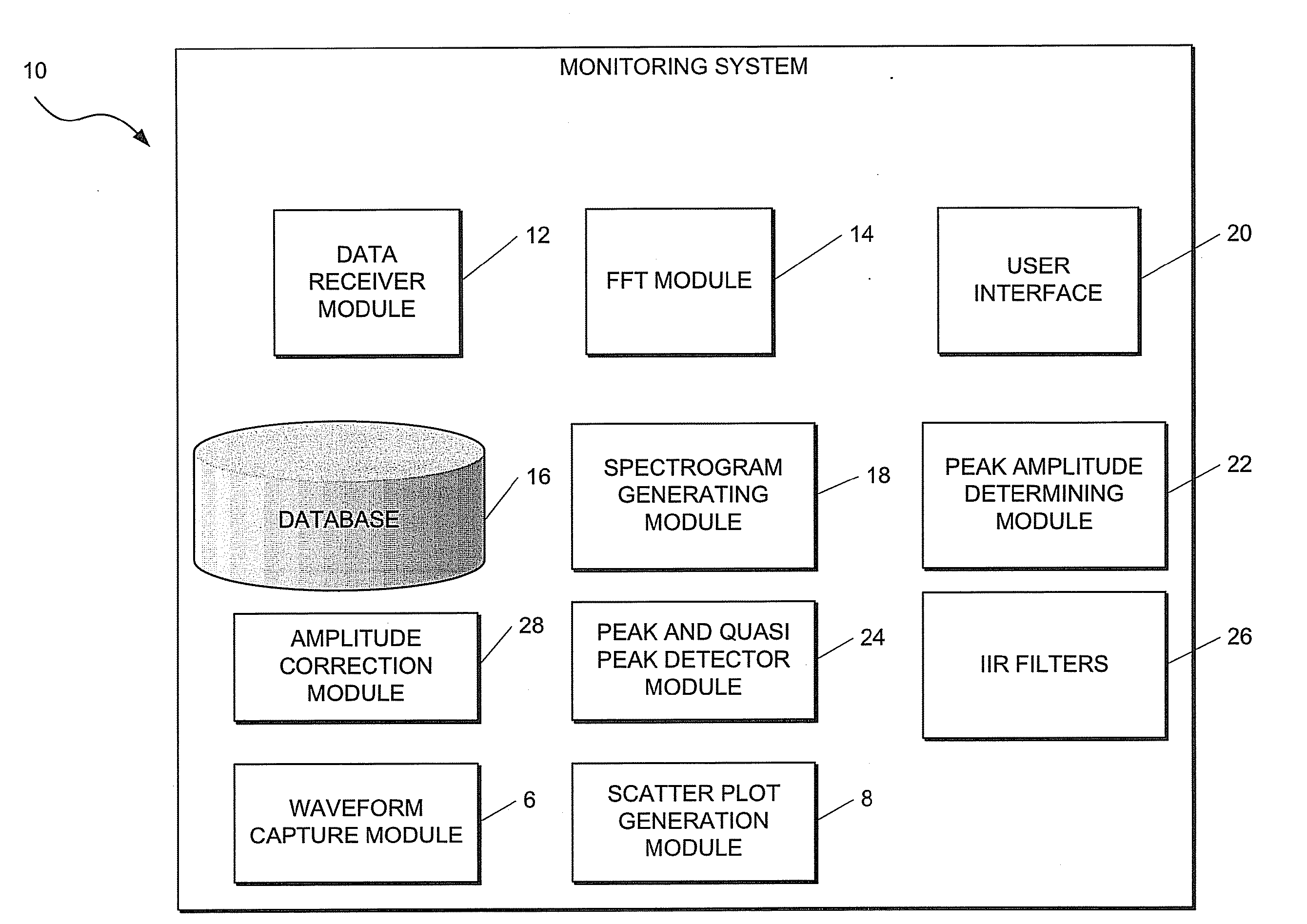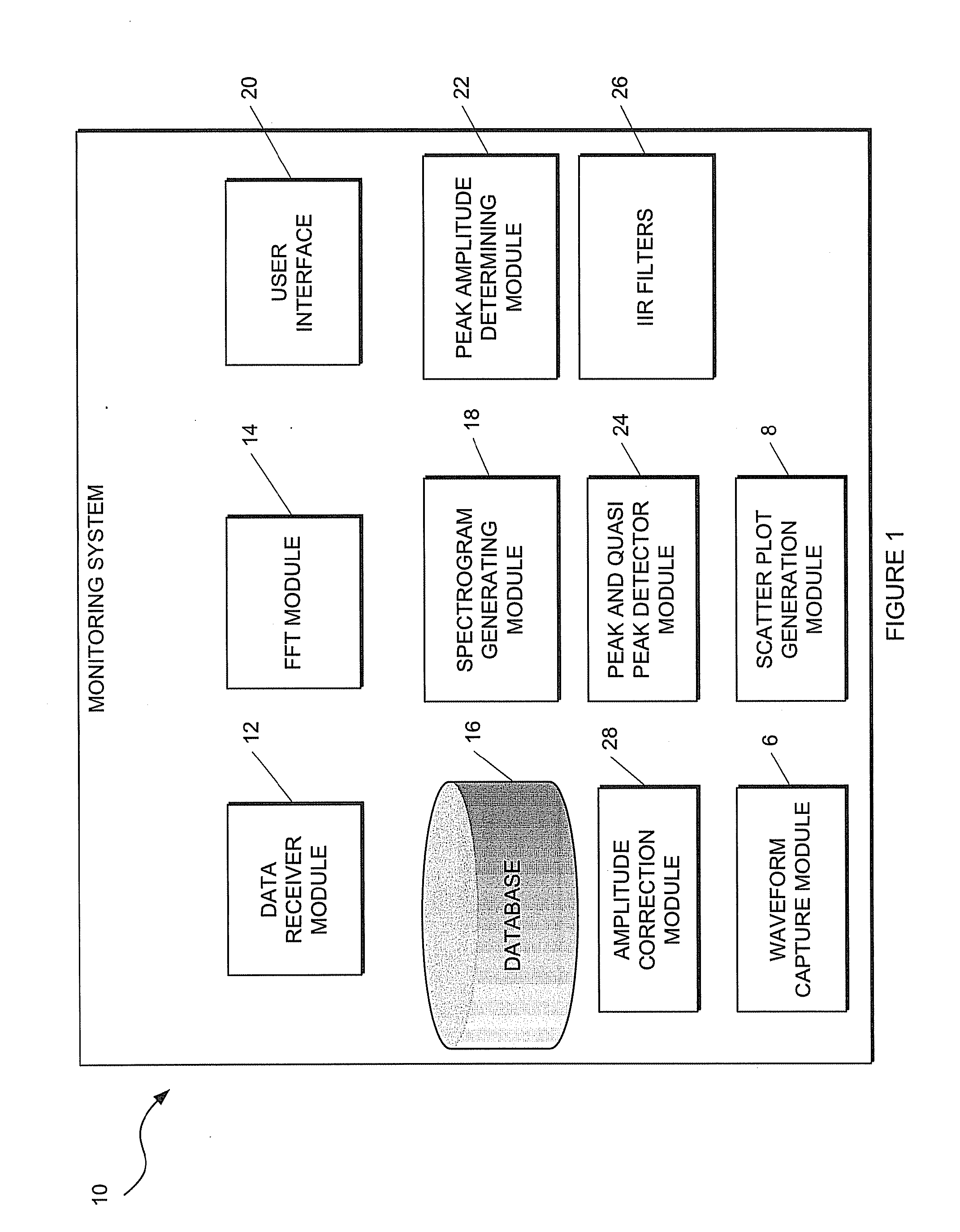Time domain electromagnetic interference monitoring method and system
a time domain electromagnetic interference and monitoring method technology, applied in the field of time domain electromagnetic interference monitoring methods and systems, can solve the problems of poor frequency response, large frequency band bandwidth, and inability to accurately represent wideband chaotic emi signals, etc., and achieve the effect of wide frequency band bandwidth
- Summary
- Abstract
- Description
- Claims
- Application Information
AI Technical Summary
Benefits of technology
Problems solved by technology
Method used
Image
Examples
Embodiment Construction
[0060]In the following description, for purposes of explanation, numerous specific details are set forth in order to provide a thorough understanding of an example embodiment of the present disclosure. It will be evident, however, to one skilled in the art that the present disclosure may be practiced without these specific details.
[0061]Referring now to FIG. 1 of the drawings where a system for monitoring electromagnetic interference (EMI) emitted by equipment in accordance with an example embodiment is generally indicated by reference numeral 10.
[0062]The system 10 typically comprises a plurality of components or modules which correspond to the functional tasks to be performed by the system 10. In this regard, “module” in the context of the specification will be understood to include an identifiable portion of code, computational or executable instructions, data, or computational object to achieve a particular function, operation, processing, or procedure. It follows that a module ...
PUM
 Login to View More
Login to View More Abstract
Description
Claims
Application Information
 Login to View More
Login to View More - R&D
- Intellectual Property
- Life Sciences
- Materials
- Tech Scout
- Unparalleled Data Quality
- Higher Quality Content
- 60% Fewer Hallucinations
Browse by: Latest US Patents, China's latest patents, Technical Efficacy Thesaurus, Application Domain, Technology Topic, Popular Technical Reports.
© 2025 PatSnap. All rights reserved.Legal|Privacy policy|Modern Slavery Act Transparency Statement|Sitemap|About US| Contact US: help@patsnap.com



